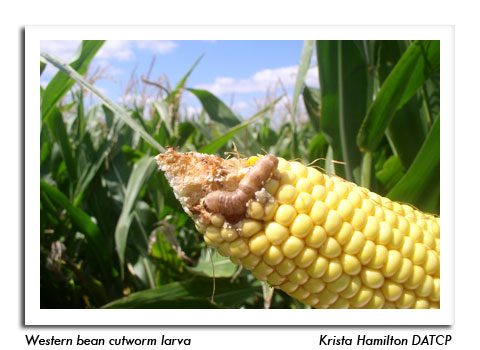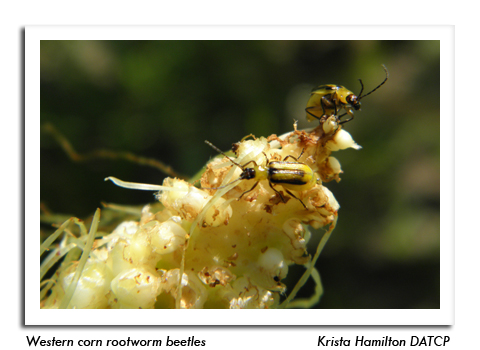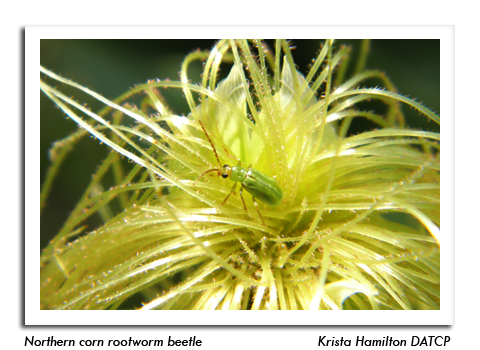
 |
|
|
Corn
Volume 59 Number 15 Date 08/14/2014 WESTERN BEAN CUTWORM - Moth collections have declined to low levels as the annual flight subsides. Preliminary results of the 2014 trapping survey indicate this year's very low count of 490 moths in 103 pheromone traps (five per trap) is comparable to last year's total of 584 moths collected in 114 traps, also approximately five per trap. Cumulative counts for the 103 pheromone traps distributed across Wisconsin are shown in the map below. The highest individual trap total for the 10-week monitoring period was only 53 moths near Pine River in Waushara County. EUROPEAN CORN BORER - Second generation larvae are appearing in the ear tips of corn. Surveyed fields in the southwest and west-central counties had 2-20% of the ears infested with 1-2 small larvae, which varied from newly hatched to third instar. The treatment window for second generation corn borers will remain open for approximately two more weeks across the southern half of the state. Controls directed against the summer larvae must be applied during the period after egg hatch and before larvae bore into the stalks, prior to the accumulation of 2,100 degree days (modified base 50°F). CORN ROOTWORM - The annual beetle survey is now in progress and early results indicate a population increase in southwestern Wisconsin and a decrease in the south-central area. The average count in the southwest is 0.9 beetle per plant, an increase from 0.6 per plant in 2013. In the south-central district, the current average of 0.3 beetle per plant compares to 0.5 per plant last year. A count of 0.75 or more beetle per plant (7-8 beetles per 10 plants) signals the potential for root damage to non-Bt, continuous corn in 2015. Above-threshold populations were found in 16 of the 66 fields (24%) surveyed as of August 13. -- Krista Hamilton, DATCP Entomologist 





|
|
|